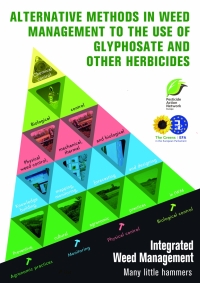The present report aims to emphasise that we already have all the tools necessary to gradually start building a pesticide-free agricultural model and to confirm that weed control is possible using other means than harmful herbicides. There is an urgent need to develop technological methods of agriculture that do not depend on pesticide use. Using the popular glyphosate-based herbicides as a reference, the current analysis presents a wide variety of weed management approaches, where farmers work together - rather than against - nature and help maintain a high agricultural yield without contaminating the soil, destroying biodiversity and jeopardising human and environmental health. Since glyphosate-based herbicides are non-selective and of broad spectrum, the alternative methods presented in this report can also substitute the use of different herbicide products.
This report also covers topics such as the use of glyphosate in the EU and globally, pesticide sales in the EU, and impacts on soil behaviour and environmental safety, as well as human health.
By integrating the different available agricultural practices (e.g. preventive, agronomic and mechanical methods) with the broad knowledge we have acquired on the biological and ecological characteristics of herbs and plant crops, today farmers are capable of overcoming major agricultural challenges and manage weed growth successfully, maintaining a high agricultural yield, avoiding resistant species, protecting soil biodiversity and erosion, and reducing green-house emissions among others. This report presents and discusses the different alternative agricultural practices to herbicide use in weed control that when combined result in a sustainable weed management.
